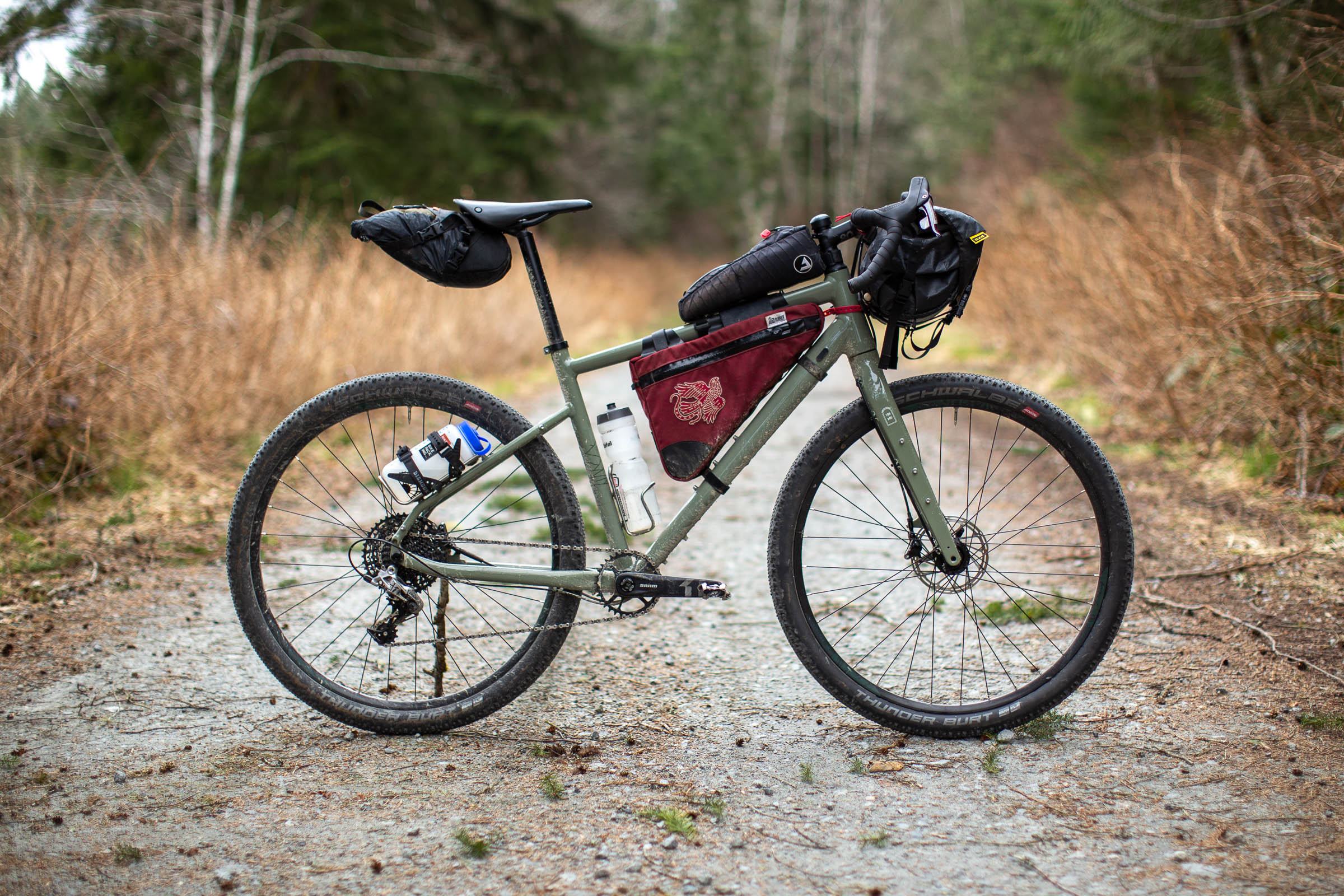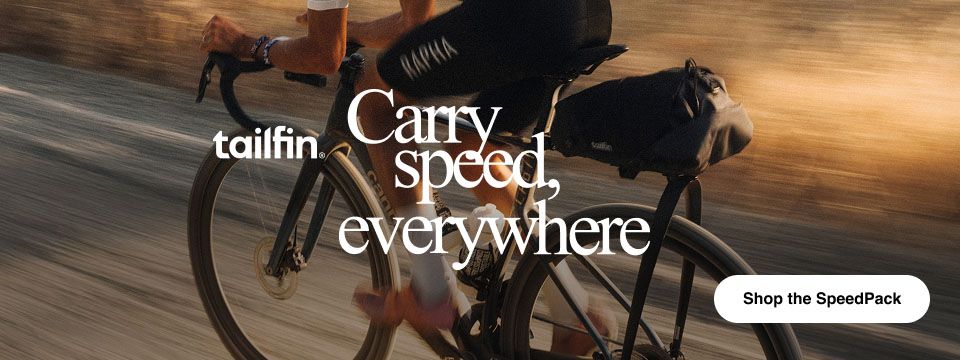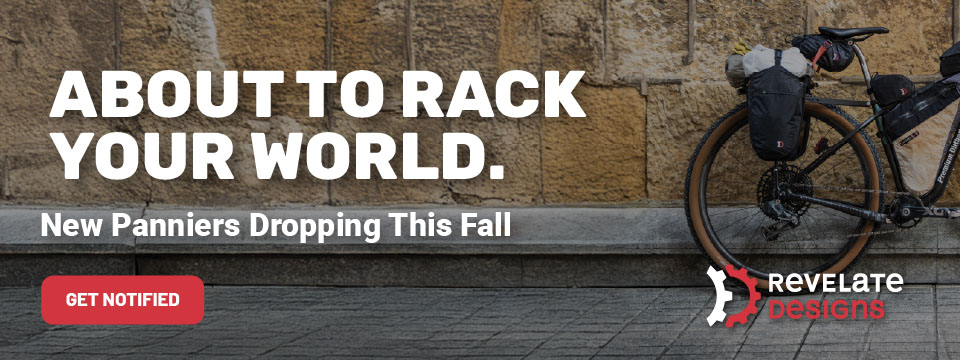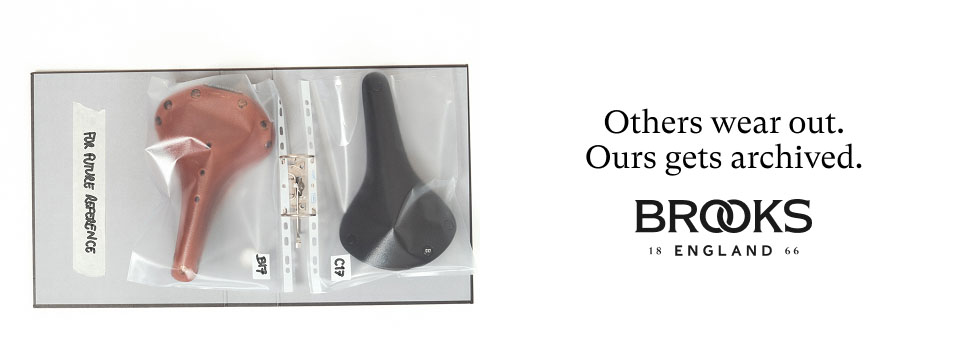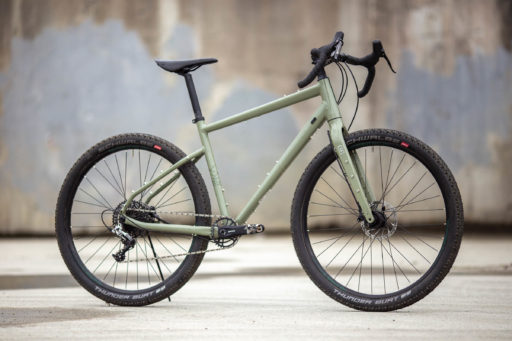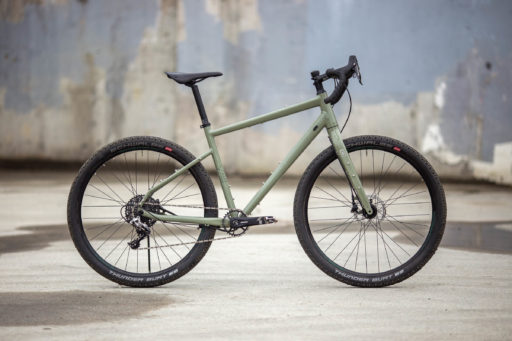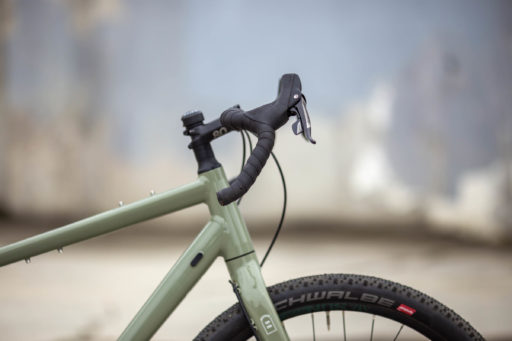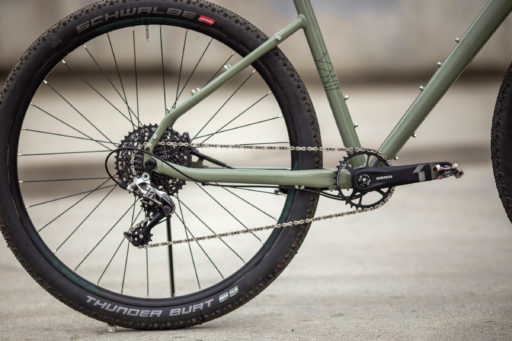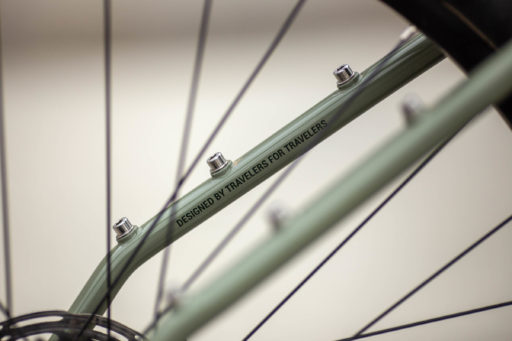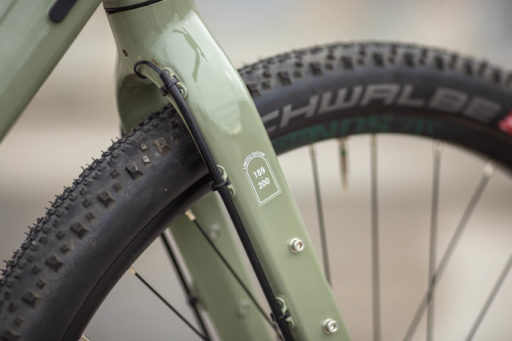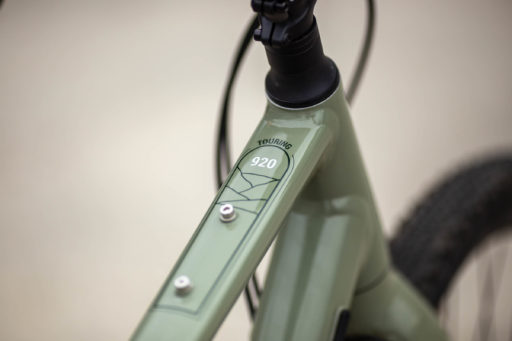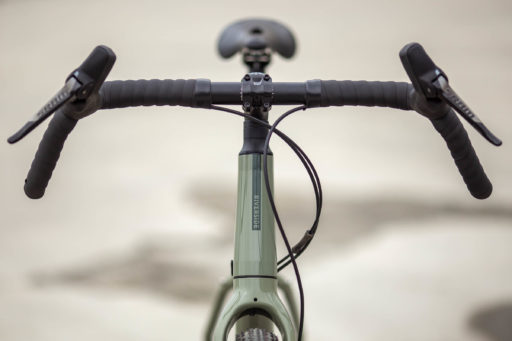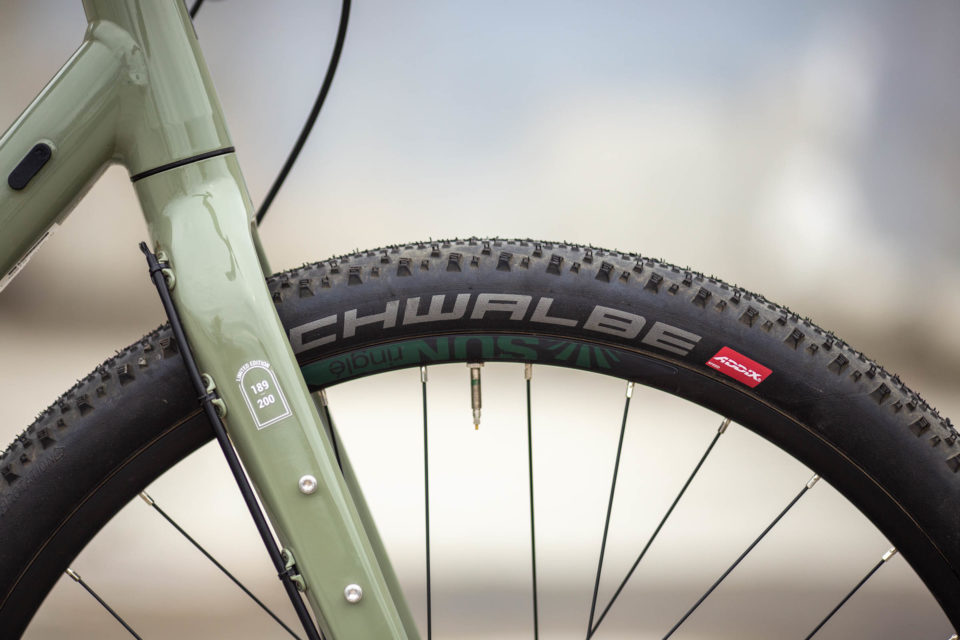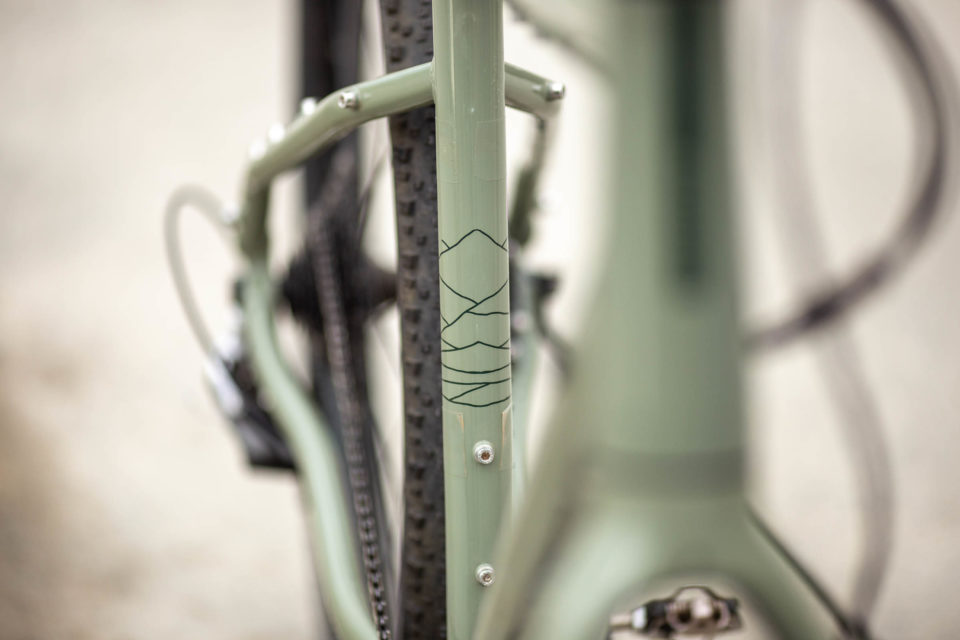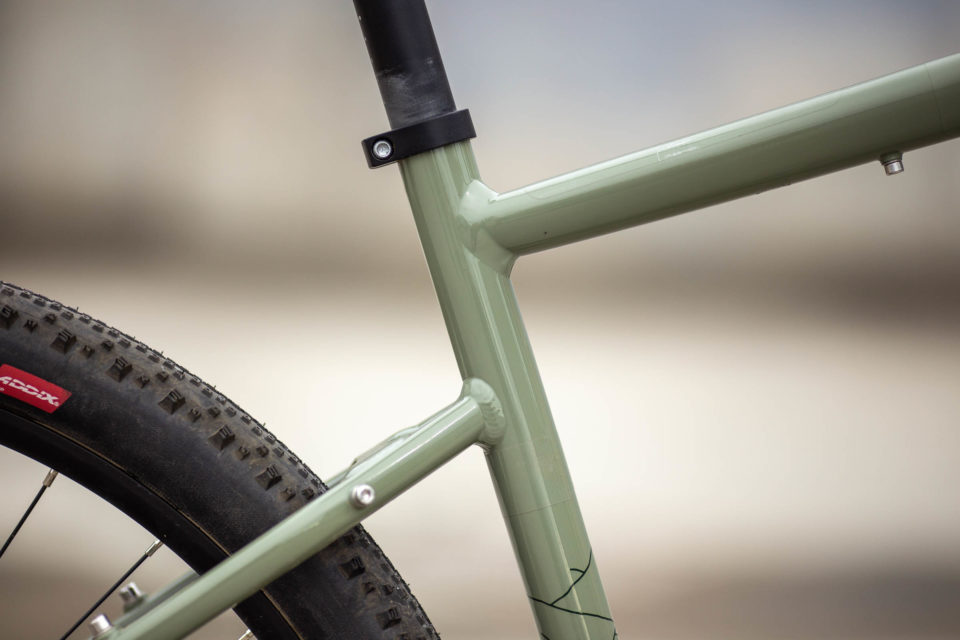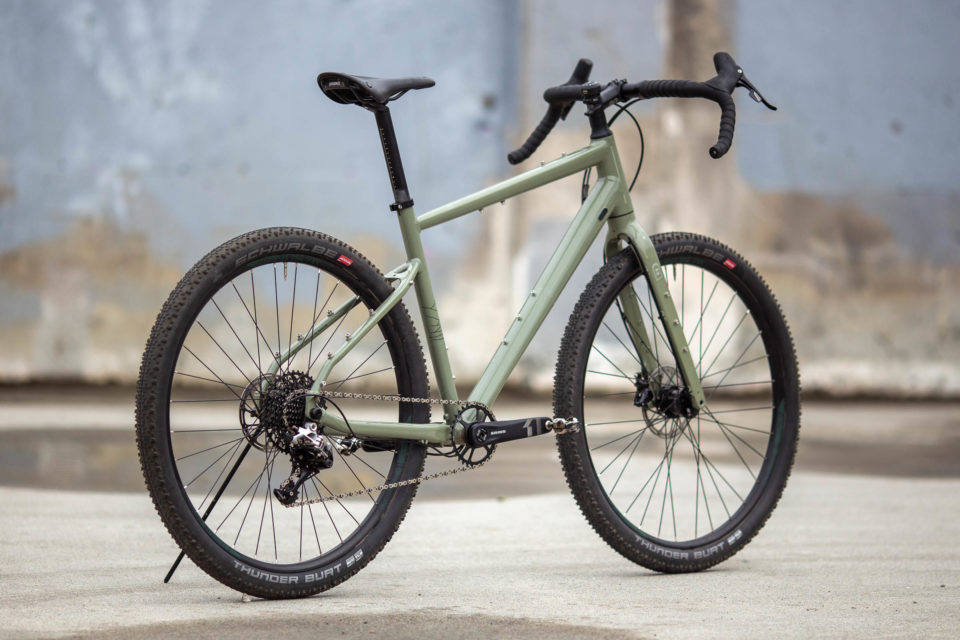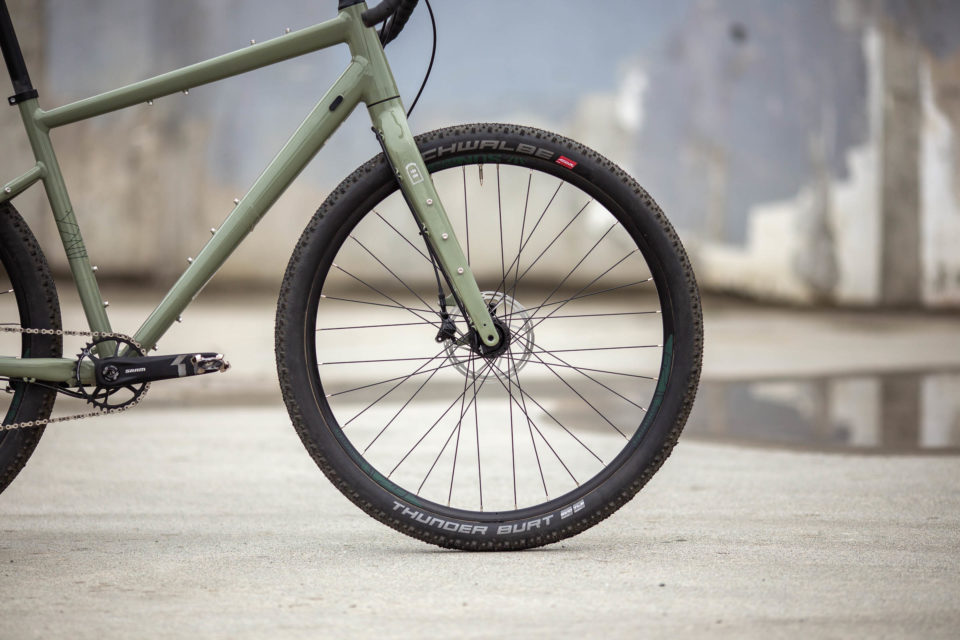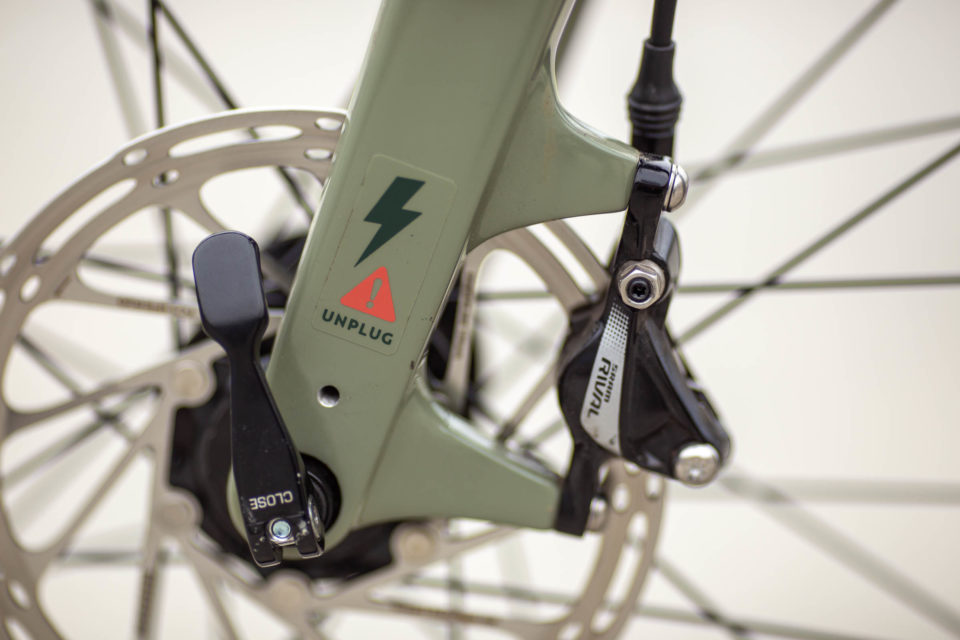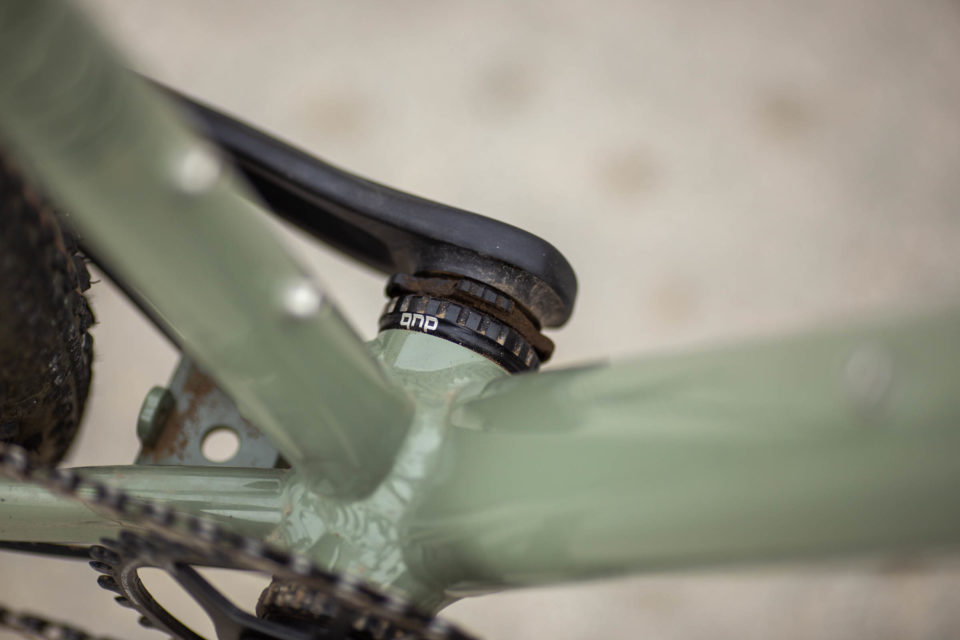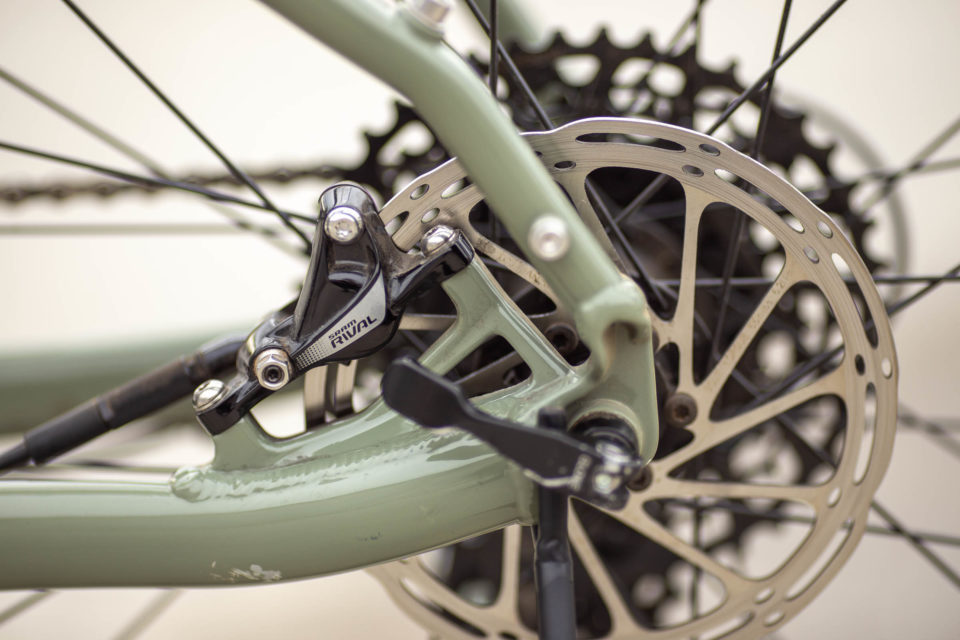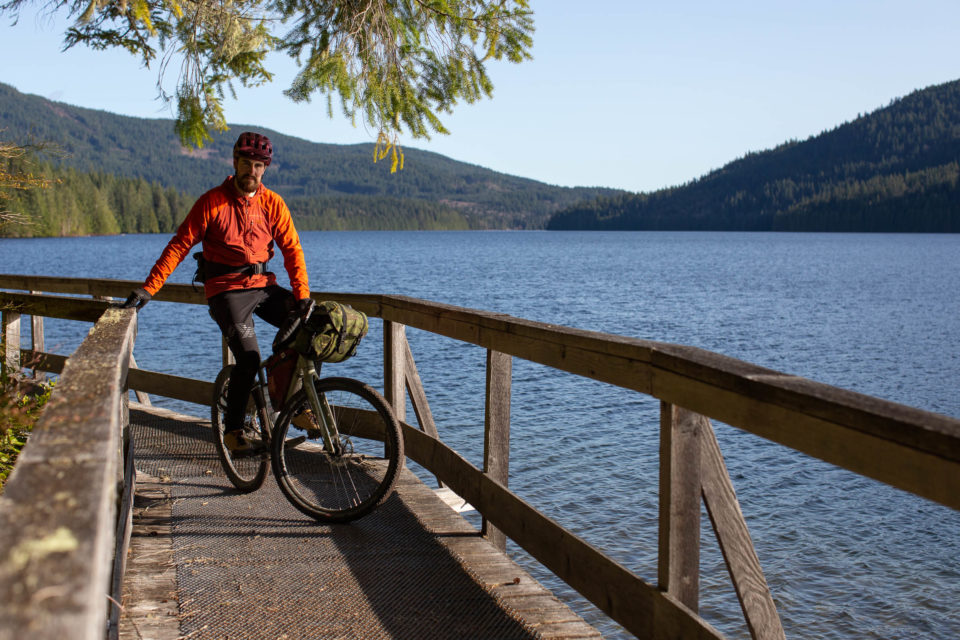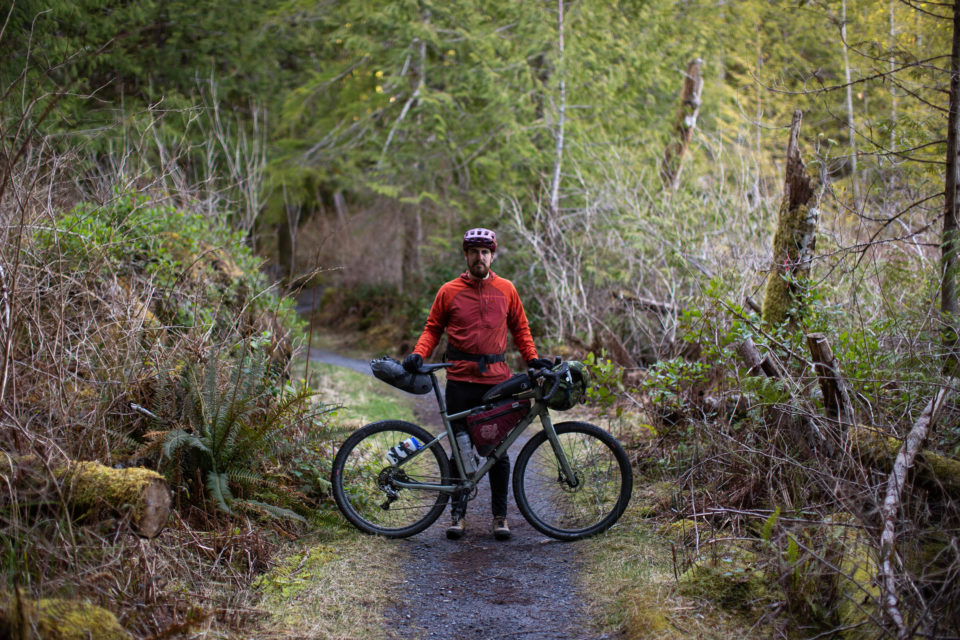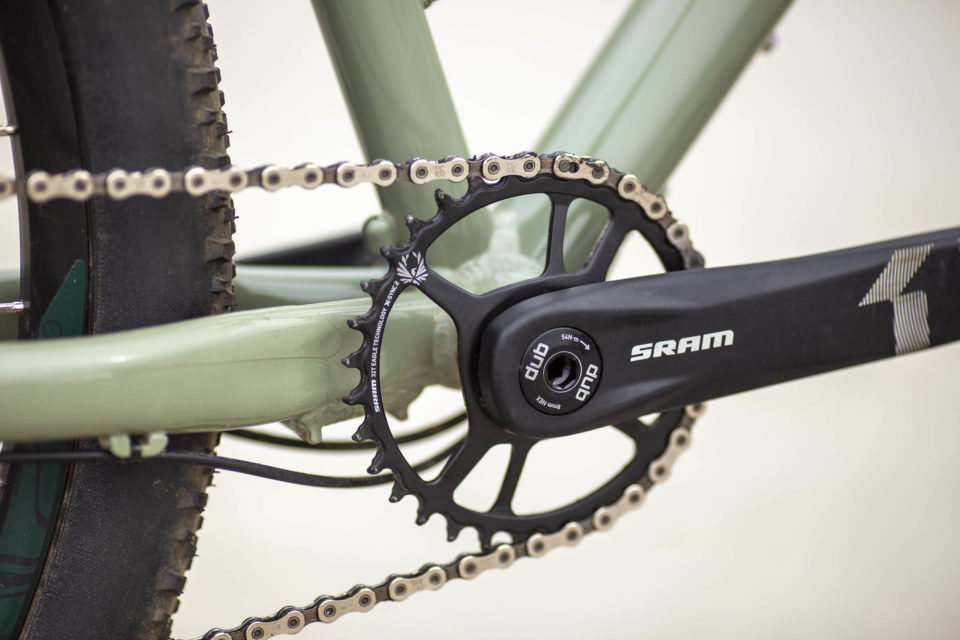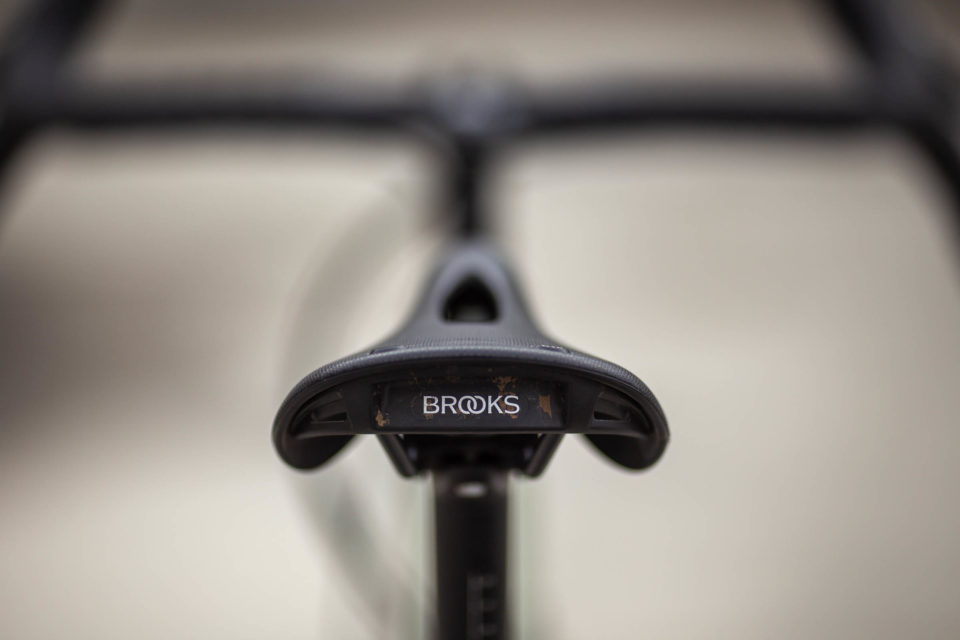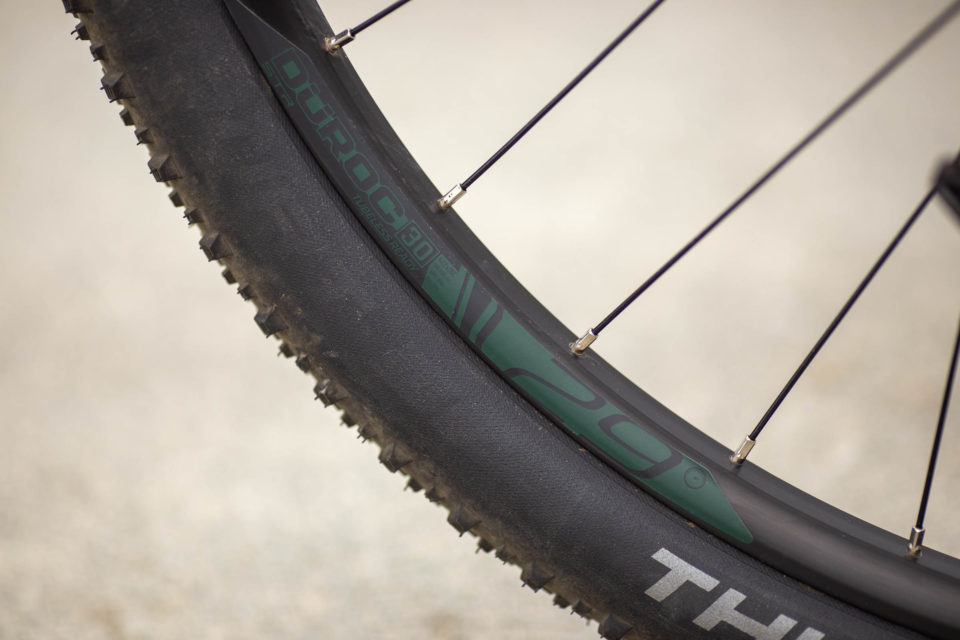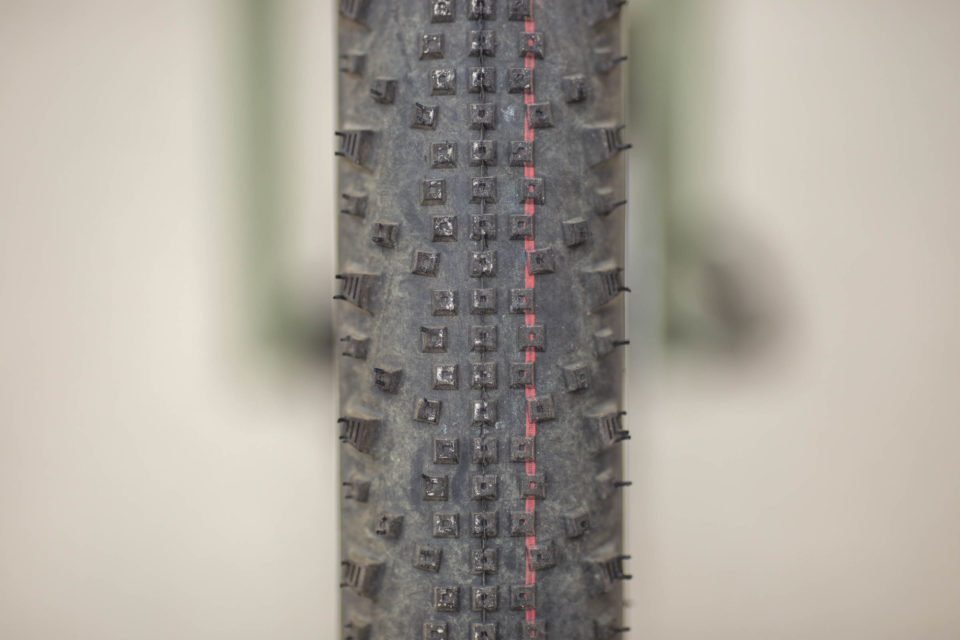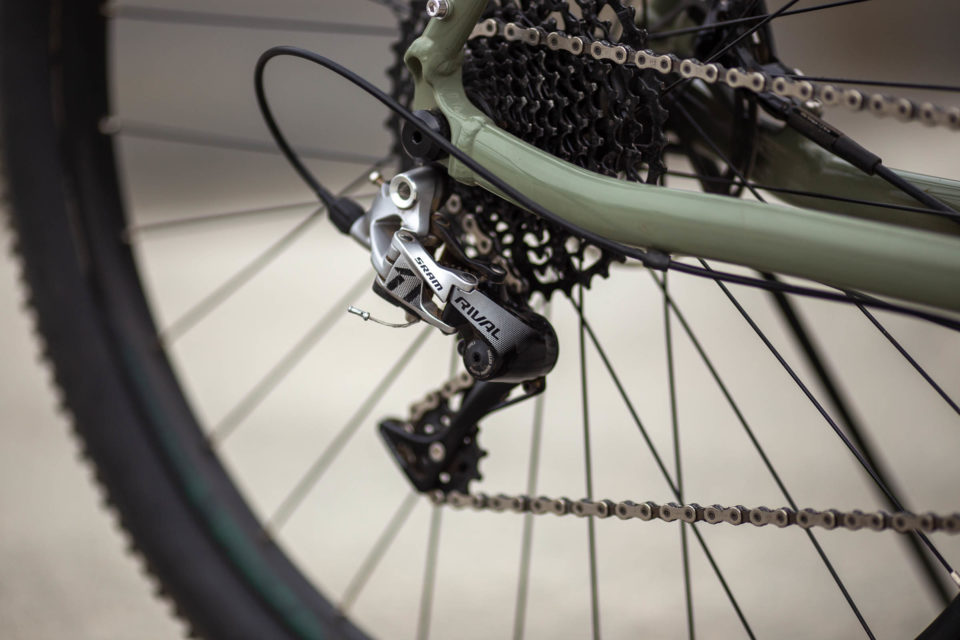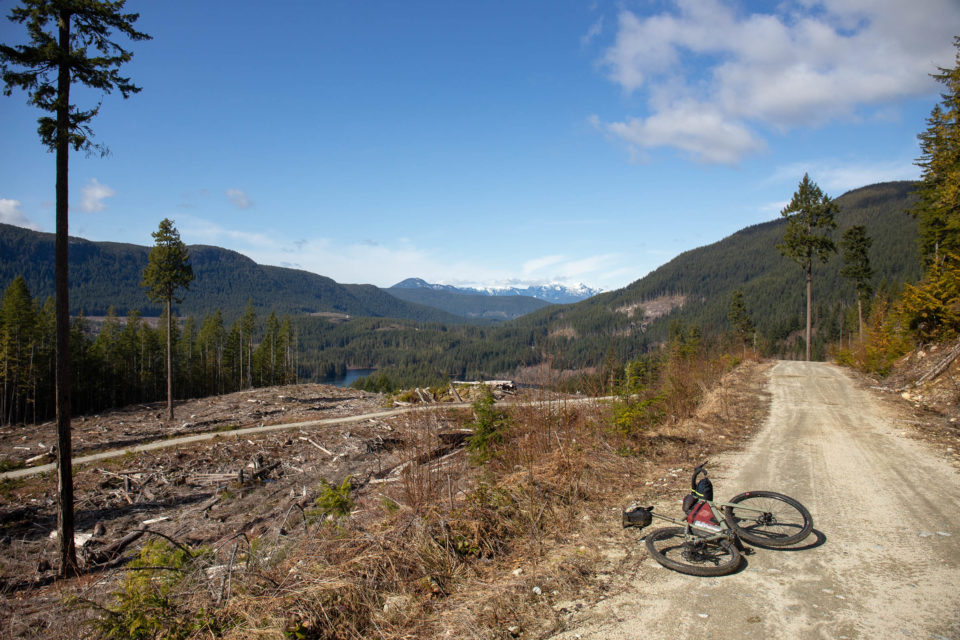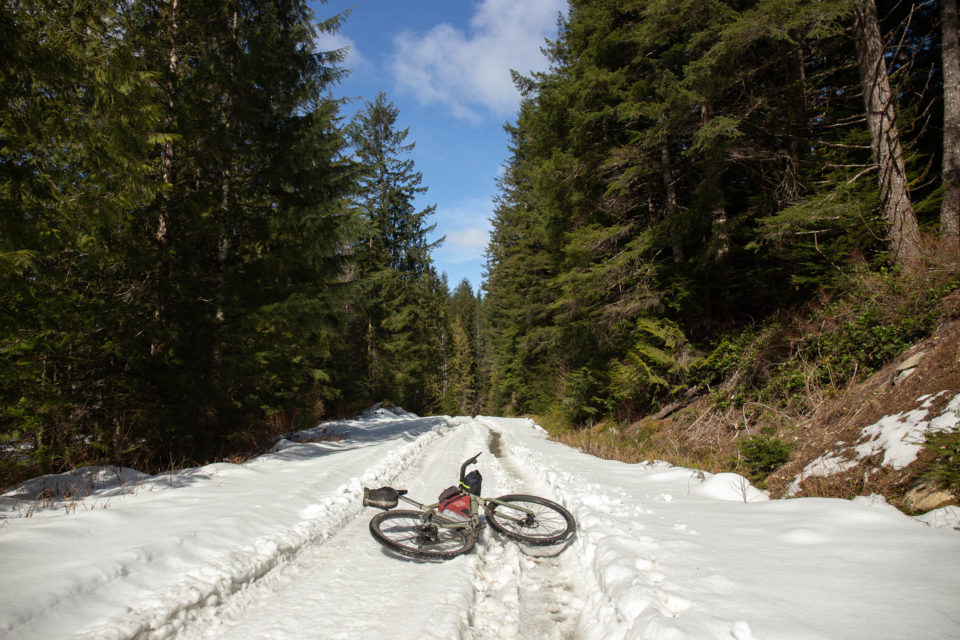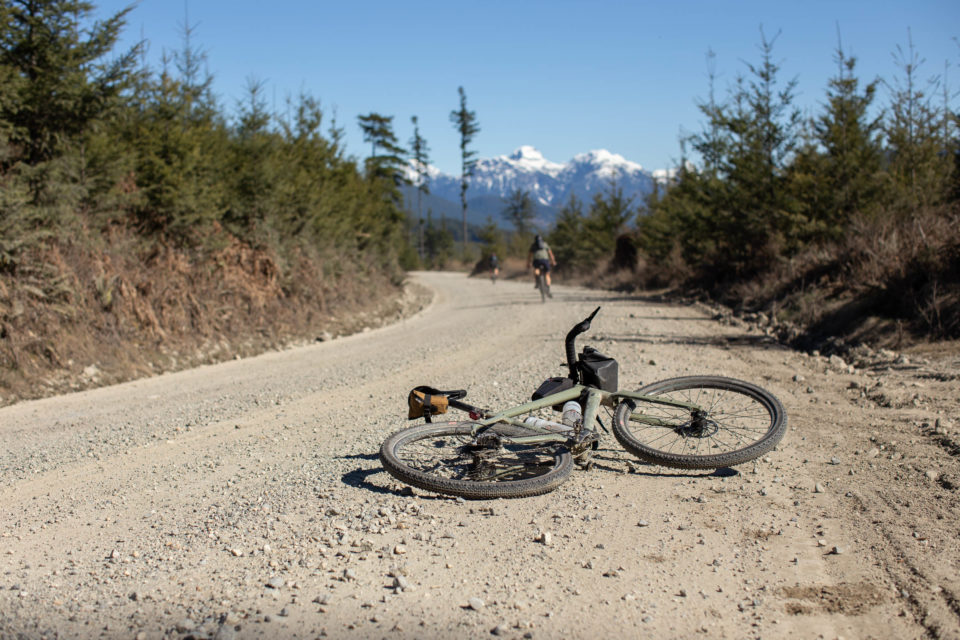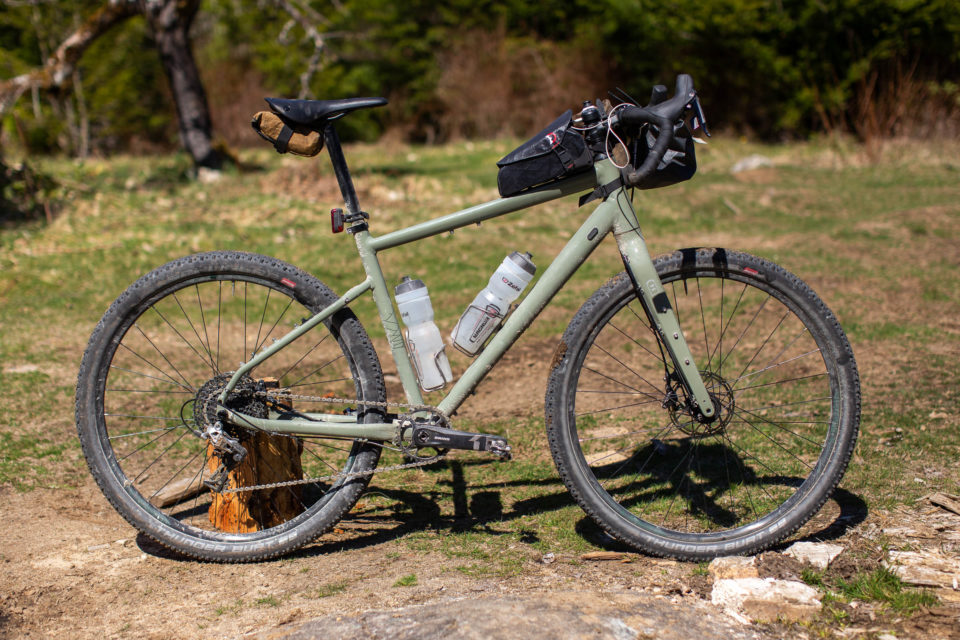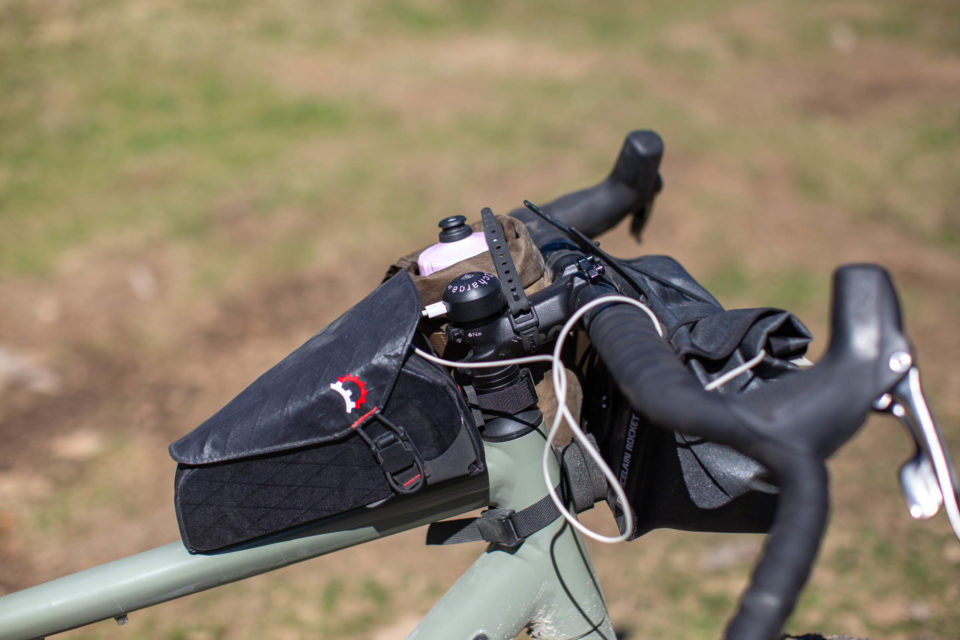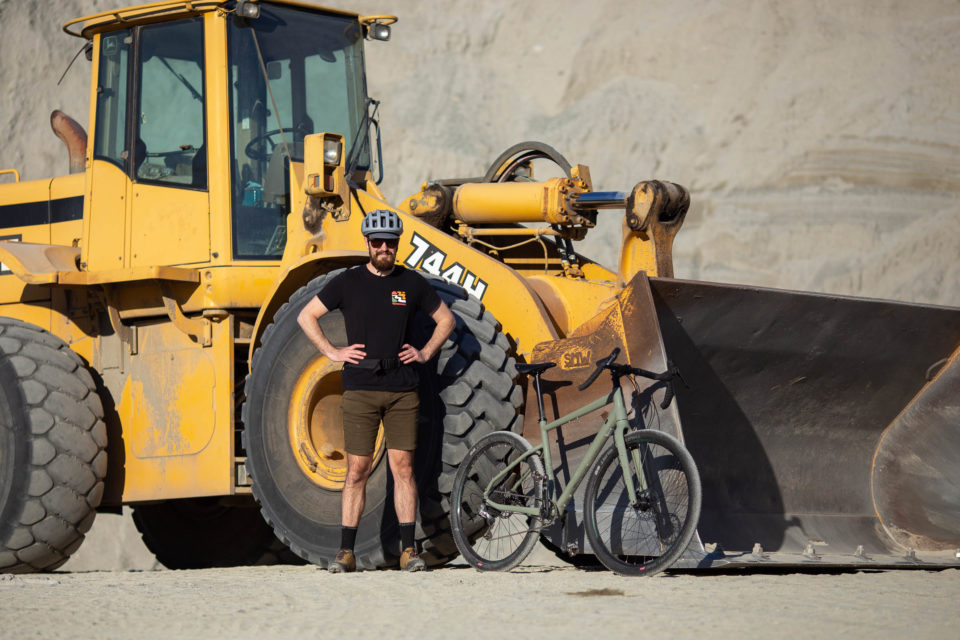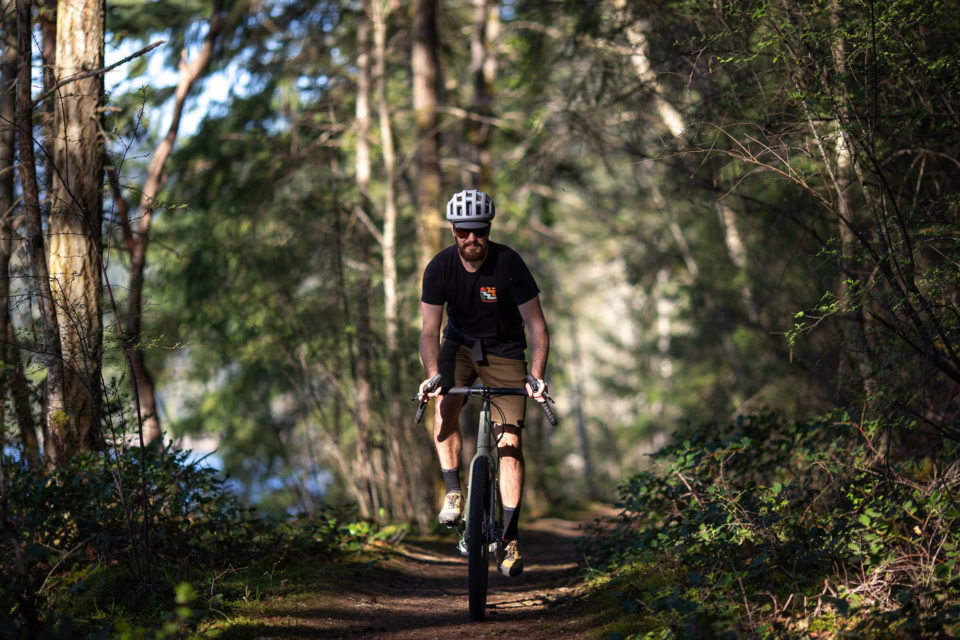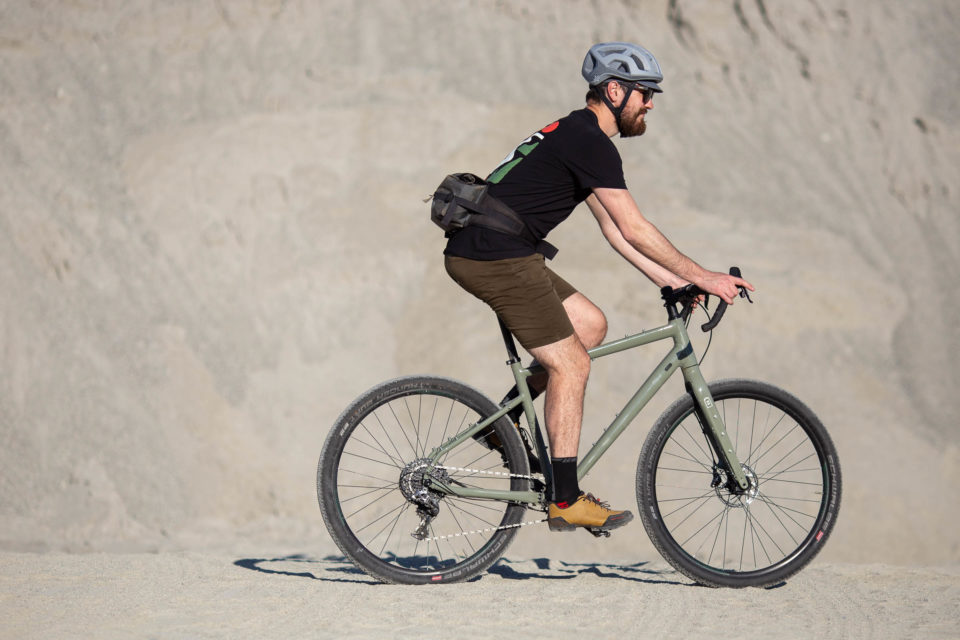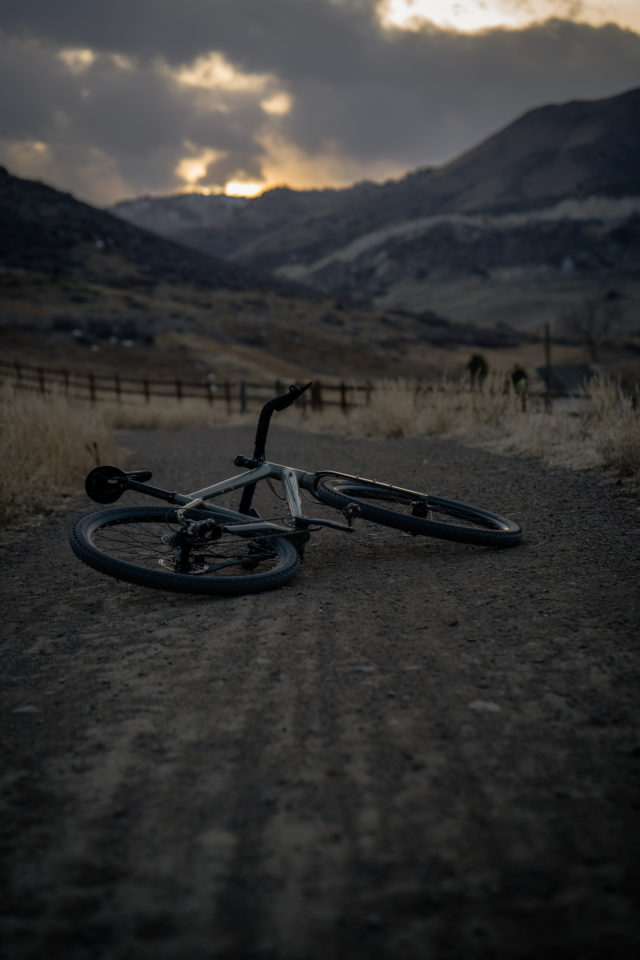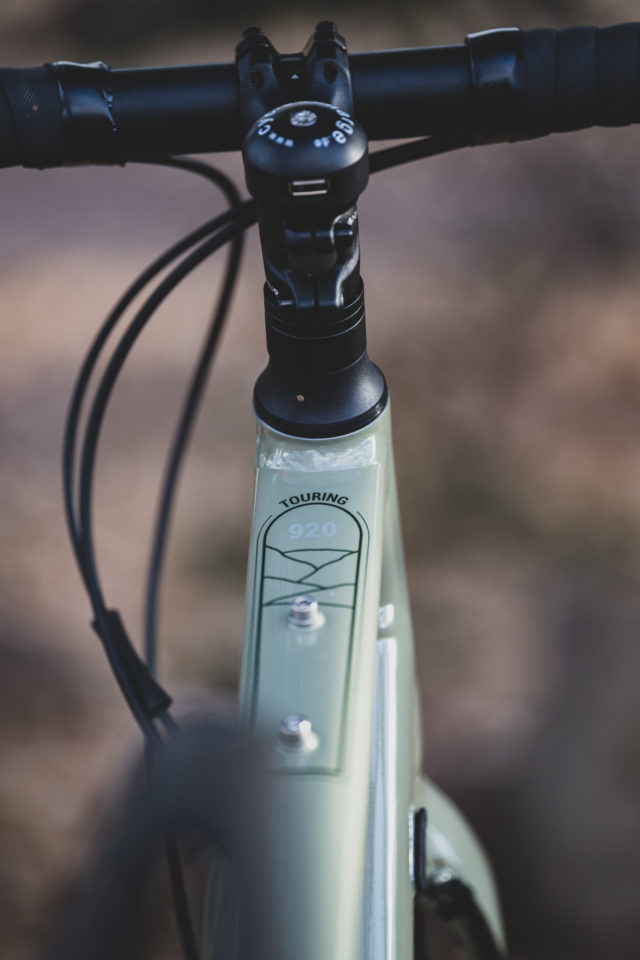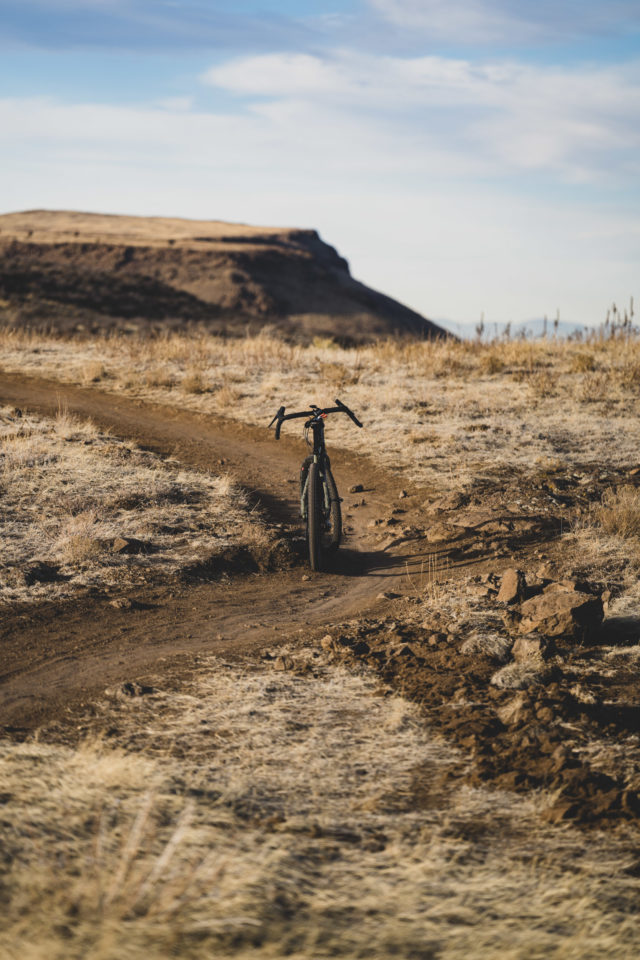Decathlon Riverside Touring 920 Review: Split Personality
With a well-rounded build kit, a dynamo hub, and all the mounting points you could ever need, the Decathlon Riverside Touring 920 is purpose-built for the long haul. Priced at around $1,800 USD, we were curious to see if this wallet-friendly adventure rig was as capable on the dirt as it is on paper. Find our review here…
PUBLISHED Apr 21, 2021
Our first taste of the Riverside Touring 920 came in the form of a Reader’s Rig on the site—a prototype that Riverside Touring’s communications manager, César Bygodt, had been testing out prior to its release. As expected, there were lots of questions from our readers hoping to learn more about the final product, so we were eager to get one in for ourselves. Four years in the making, the Touring 920 is the brand’s first bike dedicated to off-road riding and bikepacking, sitting alongside the slightly less off-road-capable Touring 900 and 520.
So, what’s the big deal? Why was the Riverside Touring 920 voted as one of the most interesting bikes of 2021, and why are people so curious about it? For starters, the Touring 920 has a huge selection of mounting points that are begging to be loaded up with gear. The complete build kit is exceedingly well-rounded as well. Based around a carbon fork, 1×11 drivetrain, and hydraulic disc brakes, it comes stock with a front dynamo hub and top cap USB port for power on the go. All of this at a reasonable €1,499 (~$1,800 USD) price point with a lifetime warranty is almost unheard of in a production bike.
After sharing his first impressions video over on our YouTube channel, Neil shipped the Riverside Touring 920 my way for a closer look and some loaded riding. Besides being able to check it out for myself, I was eager to see whether or not the impressive list of features on the Touring 920 held up to real-world loaded riding and bikepacking. I’ve been putting the Touring 920 through its paces here in the Pacific Northwest over the last few months for this review, on everything from lightly loaded day rides to fully loaded local campouts.
Riverside Touring 920 Frame Specs
The Riverside Touring 920 is built around a triple-butted aluminum frame and an in-house carbon fork, which is designed to offer a blend of durability, comfort, and affordability. As mentioned above, the frame and fork together offer a wealth of mounting points—33 in total—including triple pack fork mounts, rack and fender mounts, and mounts on the seat stays for Decathlon’s rear rack or certain cargo cages. Given its many mounts and generously sized main triangle, it’s clear the Riverside Touring 920 wants to be loaded up to go see the world.
- Highlights
- Frame/fork: Aluminum/Carbon
- Angles (L): 72° Headtube, 73° Seattube
- Stack/Reach: 623mm/414mm
- BB Drop/Chainstay: 54mm/458mm
- Bottom Bracket: BSA threaded
- Hub specs: 12x100mm / 12x142mm, TA
- Seatpost: 31.6mm
- Max tire size: 29 x 2.4″
- Price: €1,499 (~$1,800 USD)
The frame uses a standard BSA threaded bottom bracket and thru-axles, with 12 x 100mm front and 12 x 142mm rear spacing. With clearance for up to 29 x 2.4” tires, a clean 1×11 drivetrain, and components including flared drop bars and hydraulic brakes, it has all the fixings for a serious drop-bar mountain bike—which we’ve found often make some of the most capable and versatile bikepacking rigs.
Most of the Riverside Touring 920’s cables and hoses are routed internally, other than the brake and shifter cables along the bottom of the chainstays and the front brake hose, which runs alongside the backside of the fork. While the stock build forgoes a front derailleur, converting it to a 2x (or even 3x) drivetrain is not out of the question. Otherwise, the frame has an overall clean design with subtle graphics and “designed by travellers for travellers” printed on the inside on the non-drive side seat stay.
Geometry and First Impressions
On most bikes specced with flared drop bars, beefy 29” tires, and 1×11 drivetrain, you can typically expect geometry that’s best suited for off-road excursions and the occasional section of singletrack, but the Touring 920 has an expectation-defying geometry. Decathlon doesn’t have too many numbers and specifics on its website beyond claims of “comfort and sturdiness,” but there’s a lot we can discern from simply looking at the frame—mainly because it rides nearly exactly how it looks.
The Touring 920 has a steep 72° head tube angle, which tucks the front wheel underneath the front end of the bike. This is much more on-trend with traditional gravel bikes than drop bar mountain bikes like the Kona Sutra ULTD, Salsa Fargo, and others, which all sit around 69°. Although the Touring 920’s large 29 x 2.25” tires helped cushion the ride to an extent, the head tube angle just felt too steep for them and made the front end of the bike bounce around on chunky descents. This meant I had to regularly adjust the tire pressure to dial in the comfort for the terrain, which isn’t really my style. Too hard and the front end felt chattery and harsh, too soft and it felt sluggish.
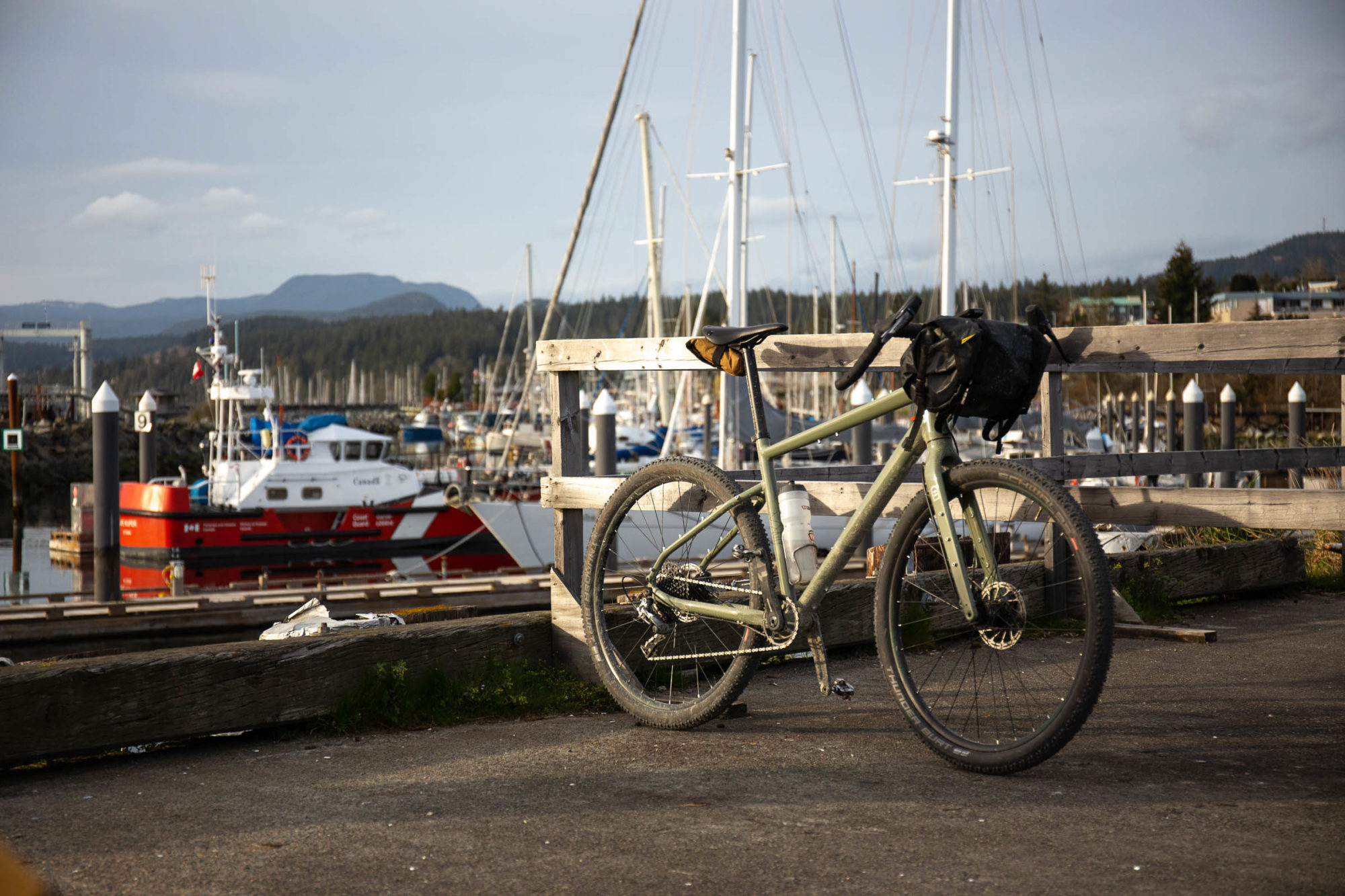
The Touring 920 has a fairly long wheelbase due to its long reach and long-ish chainstays, as well as a tall front end, which translates over to a stable, planted feel. The one significant outlier is the Touring 920’s bottom bracket height, which is surprisingly high on a bike like this with its 54mm drop—especially unusual to see in a bike designed for touring. To offer a comparison, the $1,500 Salsa Journeyman has a 72mm bottom bracket drop. Although a high bottom bracket can help with overall clearance and reducing pedal strikes on technical terrain, that’s not really what this bike is designed for, so it’s a bit of a head-scratcher.
As far as my riding position on the bike, I felt its length and high bottom bracket were offset by the high front end and wide bars. The resulting position was comfortable and upright, and is clearly optimized for long days in the saddle. On the size large I tested, I sometimes felt a little perched up on top of the bike, rather than in the bike like Neil described in his first impressions video. It wasn’t enough to feel unstable but wasn’t ideal for chunky terrain or fast descents. I’d describe the overall feel as neutral, in a good way.
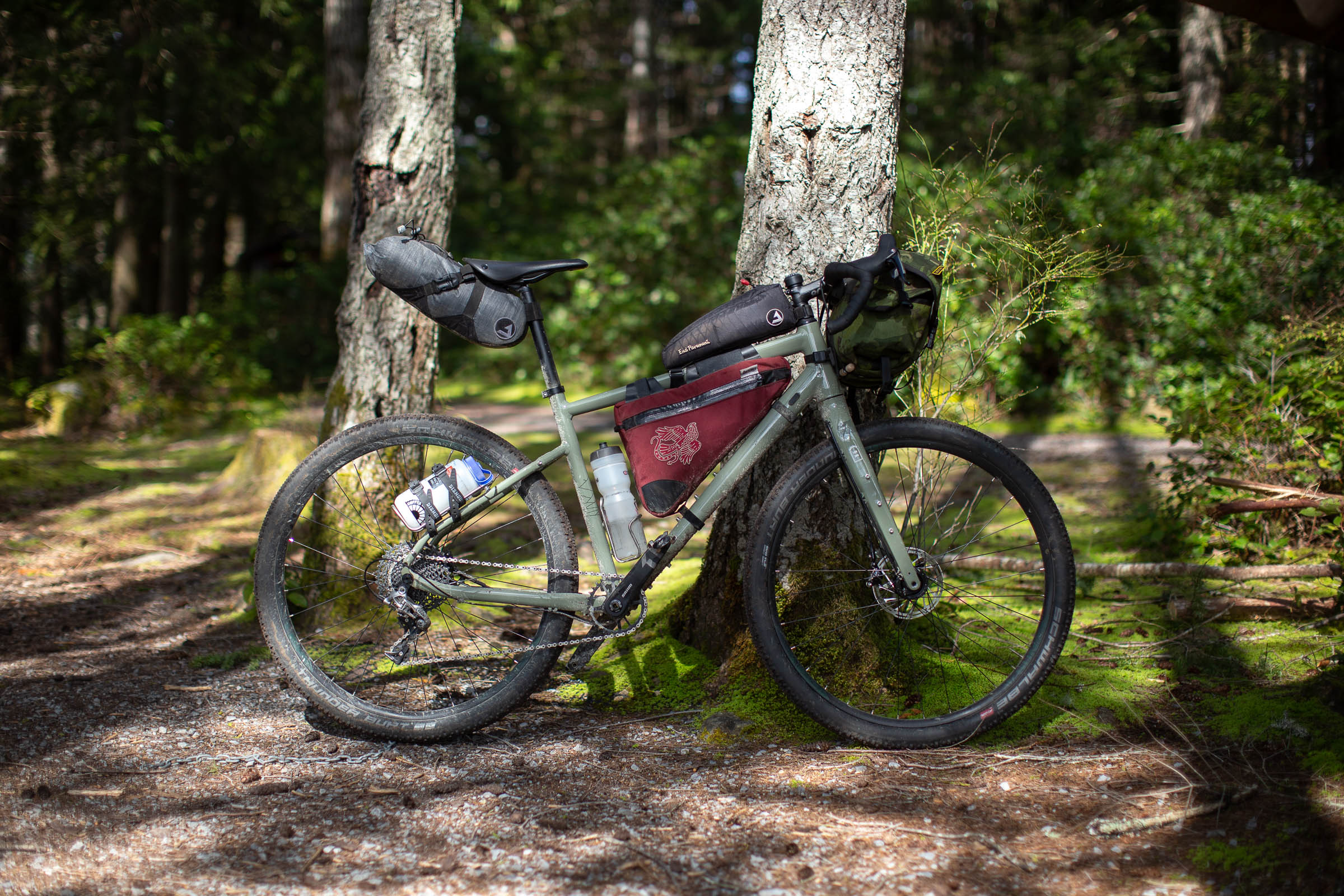
Riverside Touring 920 Build Kit
The Touring 920 is incredibly well specced and competitively priced for what you get. It’s kitted out with a lot of great little details, which add up to a well-rounded bikepacking bike right out of the box. It’s equipped with a Shimano Deore XT dynamo hub, which generates power and sends it to the Cycle2Charge USB top cap port for charging electronics on the go. It comes rolling on tubeless-ready 29 x 2.25” Schwalbe Thunder Burt tires and Sun Ringle Duroc rims, which are both decent all-rounder components, albeit a little heavy. The underrated SRAM Rival 1×11 drivetrain worked flawlessly with proper maintenance, but I felt the 32T chainring and 11-42T cassette left me undergeared in both the high and low end when loaded up and riding on steep terrain. It’s great to see hydraulic brakes, thru-axles, and the popular Brooks Cambium C15 as the stock saddle—which I consider to be a premium upgrade with a ~$100 retail price.
Decathlon Riverside Touring 920 Build Kit
- Frame Triple Butted 60661 Aluminum
- Fork Riverside Carbon
- Headset Btwin
- Bottom Bracket SRAM Dub, BSA Threaded
- Crankset SRAM Dub, 32T
- Shifter SRAM Rival 1×11
- Derailleur SRAM Rival, Long Cage
- Cassette SRAM PG-1130, 11-42T
- Chain SRAM PC1130, 11-Speed
- Brakes SRAM Rival, Hydraulic Disc
- Brake Rotors SRAM Centerline 160mm
- Rims Sun Ringle Duroc 30
- Front Hub Shimano Deore XT Dynamo, 12x100mm
- Rear Hub Leeche OEM, 12x142mm
- Tires Schwalbe Thunder Burt 29 x 2.25”, Tubeless Ready
- Handlebar Riverside Touring Adventure Dropbar
- Stem Riverside Touring, 80mm
- Seatpost Aluminum, 31.6mm
- Saddle Brooks Cambium C15 All Weather
- Extras Tubeless Valves, Spare Spokes
Although there is a lot to like about the Touring 920’s build kit, there were a few things that didn’t quite align for me. First, I wasn’t a huge fan of the Riverside Touring Adventure bar and felt the 24° flare was too much and the drops ended too early to use in any meaningful way. I think a bar with around 12° flare would suit the bike better, unless your primary goal is to head out on mixed-surface day rides, rather than multi-day loaded rides. The width of the bar (620mm on M, L, XL / 580mm on S) left plenty of room for a handlebar bag, including either the large or small BXB Piccolo Short Flap bags I’ve been trying out this spring. Thankfully, the SRAM Rival hoods are comfortable and did a good job of locking my hands in place when rolling through rougher terrain.
As mentioned above, the Brooks Cambium C15 is a fantastic saddle, but it’s actually a little odd to see it specced on what is supposed to be a more affordable bike. It might work for lots of folks out there, but there’s an equal chance it won’t work for you, so a cheaper OEM spec saddle would have been fine to see here as well, and maybe would have allowed for upgrades elsewhere. There were a few other small details like the awkward thru-axle/quick-release skewer combo, which wasn’t user-friendly and came loose on long rides. And if I’m getting really picky, the unfinished-looking dynamo wiring and routing could be improved. Still, for the price, these are relatively minor complaints. There might be a few irregularities with the build, but overall it offers great value and most of it makes sense for its intended use.
Bikepacking on the Touring 920
Given its impressive array of mounts, the Riverside Touring 920 has the potential to run any type of bikepacking setup. That might be a rear rack, custom bolt-on frame bag, basketpacking setup, panniers, or a more svelte saddle bag and handlebar roll. I wouldn’t describe it as limiting, in any regard.
As someone who prefers a more upright drop-bar position, I found the Touring 920 to be quite comfortable, loaded or not. I wouldn’t describe its long wheelbase, steep head tube angle, and tall front end as playful. Rather, it was decidedly stable over most terrain. While some bikes come alive while loaded up for bikepacking, the 920 maintained a planted, pleasant ride quality that was great for long days in the saddle. The twitchiness resulting from its steep front end was reduced with the addition of my fully loaded BXB Piccolo and a water bottle or two. I also snuck in a few rides with a front rack and Microwave Panniers, and it felt equally as stable. In a lot of ways, it’s a safe bet for anyone looking for a drop-bar bikepacking rig for gravel adventures, the occasional road ride, and commuting. Although it performed flawlessly for the majority of my riding, like Neil, I found its limits quickly.
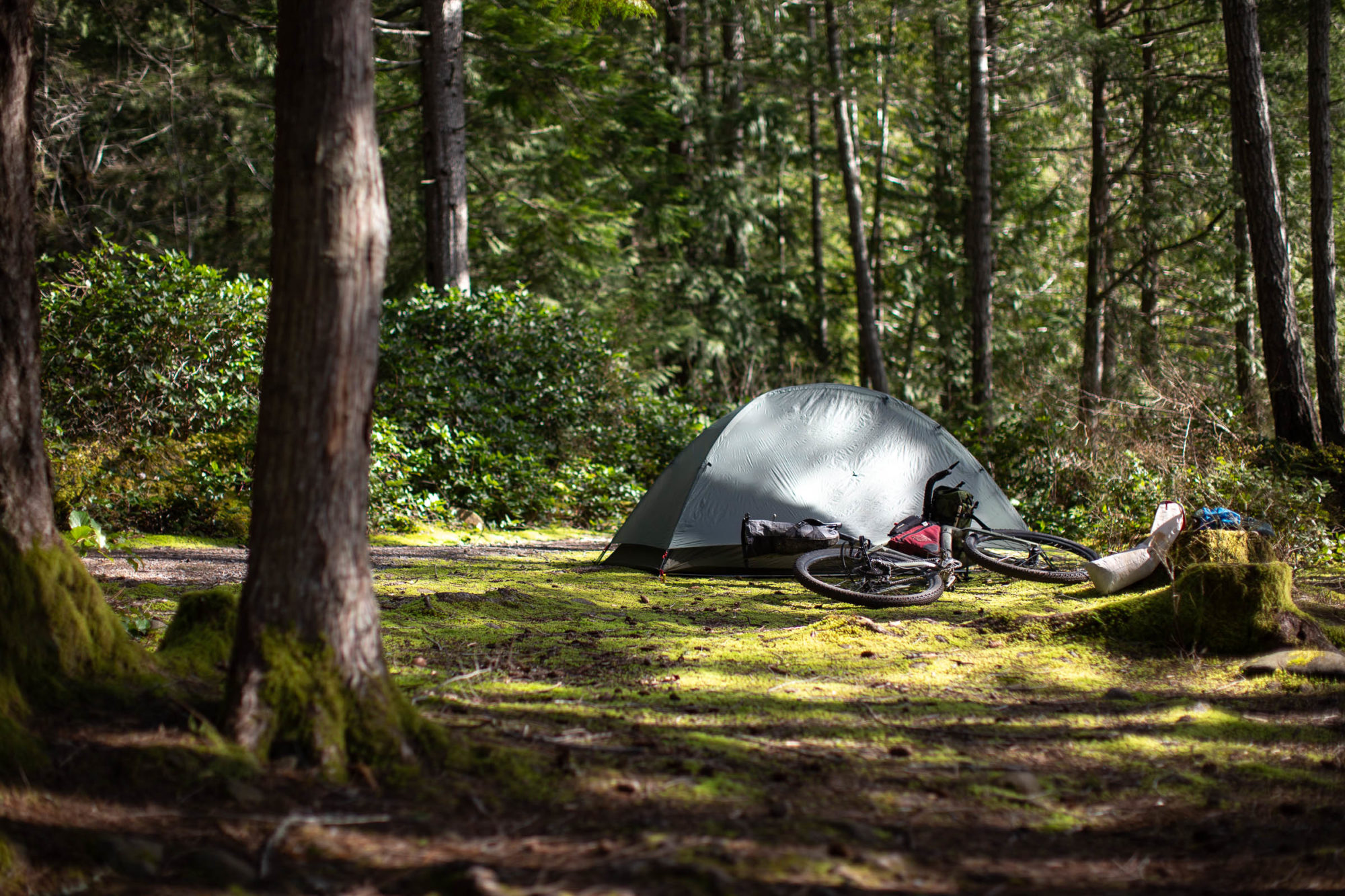
The Touring 920 felt fantastic rolling along gravel roads and tame, wide singletrack. It never felt sluggish and was quite natural zipping along some of the chunky logging roads surrounding Powell River. Unfortunately, its steep head tube angle and high front end made for rough and uncomfortable descents, which only amplified when the road conditions worsened. While modern gravel bikes with more off-road-oriented angles can sail over rough terrain, the Touring 920 falls short. In fact, it was so noticeable that it almost felt as if the Touring 920 had a split personality: a more traditional road-oriented geometry (especially in the front end) juxtaposed with the long wheelbase, big tires, and a touring-friendly build. The end product is great if you’re sticking to primarily gravel roads, but might not deliver if you’re like me and find yourself riding your gravel bike in places where a hardtail mountain bike might be the better tool for the job.
The oddly spaced seat stay bosses are designed to accommodate Decathlon’s rear rack, but it just so happens that two of the three (on each side of the bike) bosses are spaced for standard bottle mounts. They use some beefy 5mm hex bolts to provide the strength to mount the rack, which also means not all bottle/cargo cages will work mounted in this position. My standard King Cage bottle cages didn’t have enough room for the bolts, but my King ManyThing cargo cage just had enough room to squeeze them through. I was a little nervous about running a Nalgene full of water so close to my rear wheel, but in the end, I had no issues and was happy to increase the carrying capacity of the bike without adding the weight of a rack. At the time of writing, Decathlon’s rear rack is out of stock, so finding a cargo cage that works or making use of the standard rack mounts are both great options.
Having the dynamo hub and USB top cap charger all integrated into a stock build is uncommon and great to see. The Shimano Deore XT dynamo hub paired with the budget-friendly Cycle2Charge USB charger is a simple, plug-and-play style charging system and adds a lot of value to the entire bike. I found the USB charger to work best at 20km/hour or faster, and due to its lack of internal buffer battery, it seemed a little finicky at slower speeds, including technical low-speed trails and crawling up steep climbs. To get the most out of the dynamo system, charging a cache battery directly while you ride would be my recommendation.
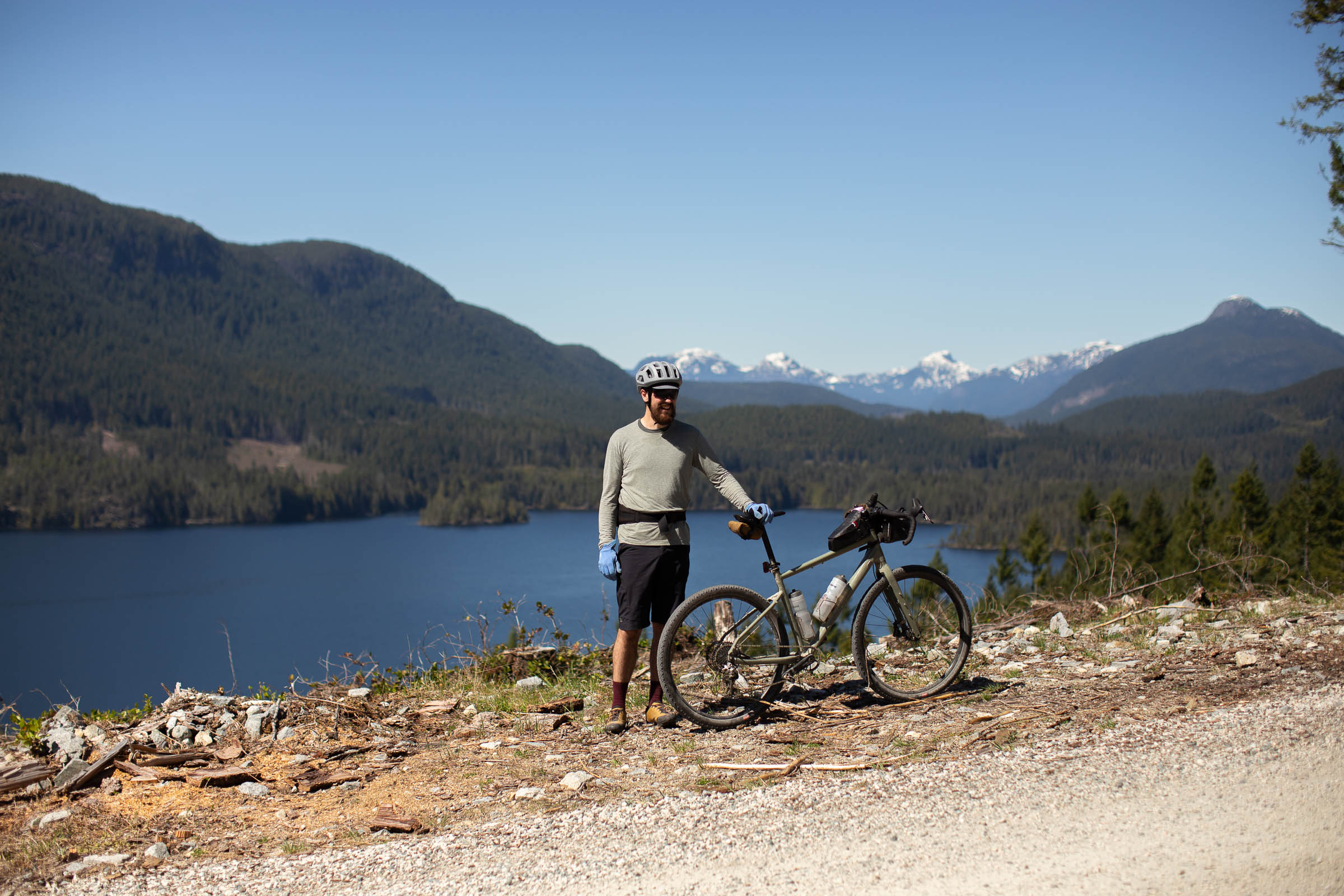
2021 Riverside Touring 920 Updated and Availability
Decathlon has already announced the 2021 Touring 920 and the majority of the bike remains the same besides a splash of new paint, with some black accents over the same sage green frame colour. The frame, geometry, and build kit all remain the same, so everything you’ve read here still applies to the latest version.
That brings me to availability, which was the biggest concern when the Touring 920 was first announced. For those unfamiliar with the current state of the cycling industry, bikes and components are hard to come by right now, and you can expect inventory to be sporadic throughout this year and into 2022. When I asked Decathlon about Touring 920 availability, they were just as unsure as the rest of the industry seems to be. North American customers can expect to wait until 2022 for the Touring 920, while European customers can expect to see some availability in June, and then a larger restock this fall. They anticipate stock and availability to be more consistent in 2022 across all of their distributors, but what that looks like exactly is unknown. We’ll be sure to update you when we learn more about availability here in North America.
For now, we know bikes will be sold directly through Decathlon, and their Instagram page is the best place to find updates and the latest news. They’ve also got their own bags in the works, which should be available later this summer. It’s worth noting that the Riverside Touring 920 product page on the UK website is being updated, and right now only the French website is live.
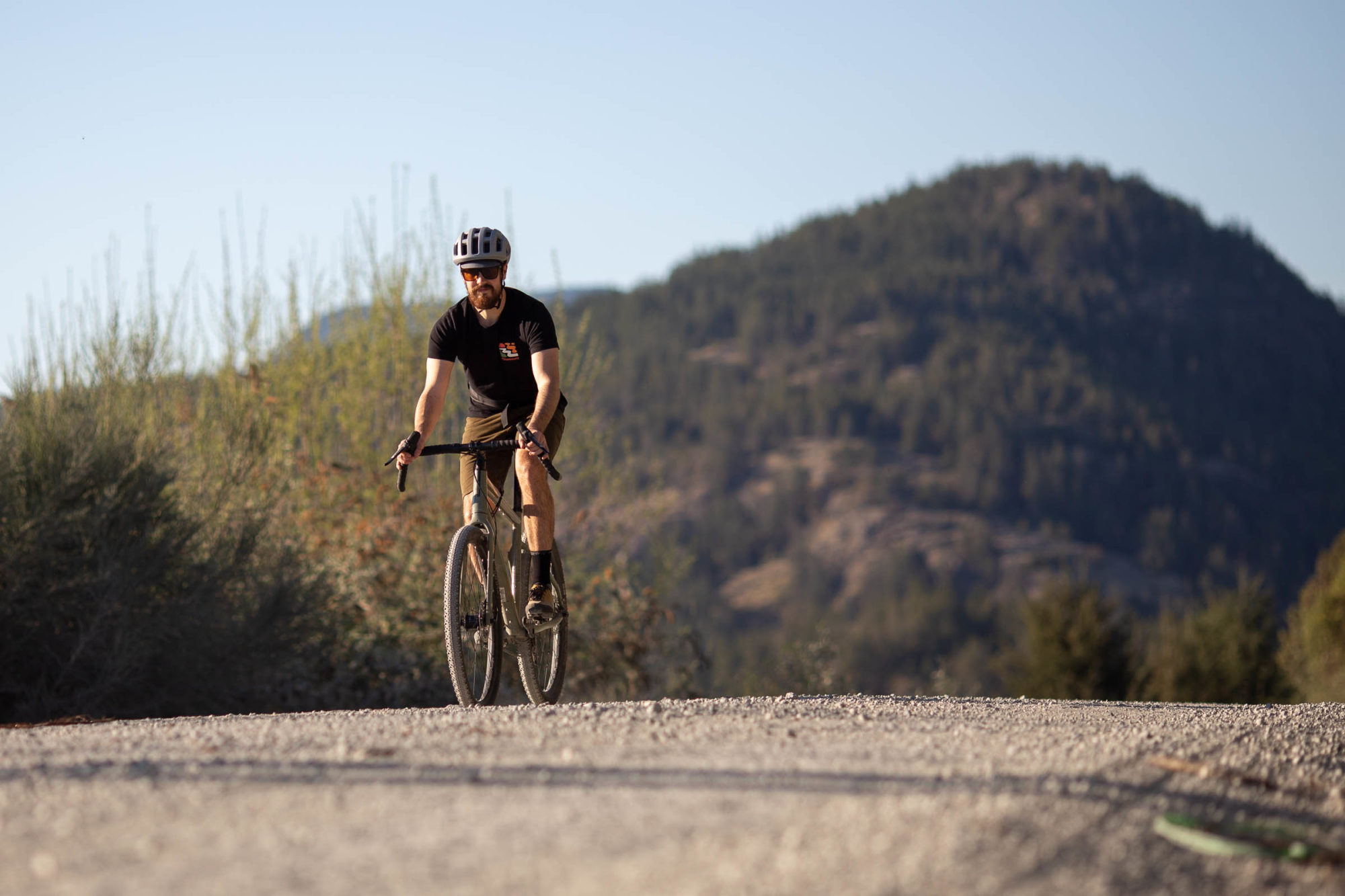
- Model / Size Tested: Decathlon Riverside Touring 920 (Size Large)
- Actual Weight As Sent: 27.2 pounds (12.3 kg) with XT pedals
- Place of Manufacture: Taiwan
- Price: €1,499 (~$1,800 USD)
- Manufacturer’s Details: Decathlon.fr
Pros
- Fantastic value
- Well-rounded build
- Comfortable and stable on smooth terrain
- Dynamo hub and charger
- Lots of mounting options
Cons
- Limited Availability
- Front end feels too steep and harsh on rough roads
- Quick-release thru-axles aren’t user friendly
- Undergeared for loaded climbs and fast descents
Wrap Up
The general consensus online is that the Decathlon Riverside Touring 920 offers a lot of bang for your buck and is a well-executed touring rig, and after spending some time with it, I’d tend to agree. It’s hard to argue with the dynamo-equipped build kit, complete with modern specs like thru-axles, tons of mounting points, and generous tire clearance. Although the geometry doesn’t hit the mark as a do-everything bikepacking bike, it has the potential to be perfect for long days on rolling terrain. And thanks to its big tires and reasonably stable geometry, riders need not shy away from short sections of rough stuff while out riding. It’s close enough to perfect that it’s hard not to like, even if it is better suited to smooth gravel, doubletrack, and pavement.
I’d love to see an updated version with a lower bottom bracket, slightly slacker front end, and a different handlebar—three changes that might make the Touring 920 the versatile do-it-all bikepacking bike it has the potential to be. With that said, Decathlon deserves a big socially distanced high five for designing something unique and purposeful, and I look forward to seeing how the Touring 920 evolves.
Find Neil’s initial first impressions video review below.
Please keep the conversation civil, constructive, and inclusive, or your comment will be removed.







